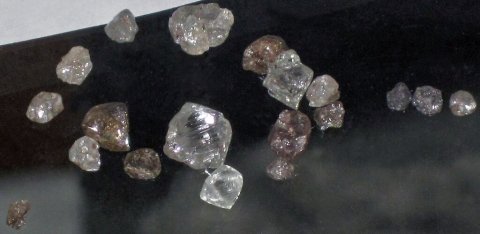It’s a crisis in diamond country. Demand has collapsed, while long-term contracts are bulging the vaults with unsold rough diamonds. As a result, the whole chain is under pressure, including the diamond dealers in Antwerp.
Nothing is as it was in the diamond industry. Even the two largest diamond giants in the world, the South African De Beers and the Russian Allrosa, now feel that way. Whoever wanted to buy rough diamonds, until recently had to humbly ask both diamond producers to ‘be allowed to buy’ their uncut stones. Once admitted to the exclusive buyers list, they could only buy stones at prices determined by the powerful ‘masters of diamond’ themselves.
Unseen chaos
Then corona struck. By the beginning of April the diamond trade had shrunk to barely 4 percent of the trade in the same period last year. Every link in the chain of the international diamond trade came to a standstill. Diamond mines stopped production, planes were grounded all over the world, diamond polishing factories were closed and jewelers took their jewellery out of window displays in most places. The chaos was unseen. Even in 2009, in the heart of the financial crisis, the diamond trade was still running at 50 percent of normal capacity.
Three months later the crisis is still not digested. Because this crisis once again exposes the international branching of the diamond industry. In India, which is still completely in lockdown, the diamond polishers are only running at half strength. “The same with some mines in Russia,” explains Margaux Donkier, spokeswoman for the Antwerp diamond industry. “The US and China, on the other hand, are our most important markets, and buyers are still massively at home there. Diamonds are a luxury product that people in times of crisis are the first to scrap and the last to buy again“.
Strangling long-term contracts
Meanwhile, the sector is cracking at all its seams, and even powerful players like De Beers and Alrosa are in danger of losing control of the diamond trade, the Bloomberg news agency warns. The problem? While demand has barely recovered – this weekend only a handful of buyers showed up for an international diamond auction of De Beers – the strangling long term contracts continue.
And that’s causing bigger and bigger problems. For although production in the mines has fallen sharply, rough stones continue to flow in on the supply side. As a result, stocks are accumulating throughout the diamond chain. According to Gemdax, a specialized consulting firm, by the end of this year the five largest diamond producers will have 4.5 billion dollars of rough, uncut stones in their vaults. A stock surplus equivalent to one third of the annual global diamond production.
Price pressure is growing
Further down the chain, Antwerp diamond dealers are obliged to continue buying rough diamonds in order to respect their long-term contracts with the producers. Contracts that guarantee them ‘first choice’ on the best stones, but at the same time burden them with an acute liquidity problem. For while their increasing diamond stock still cannot be traded, international jewelers do not pay their outstanding invoices, which means that many diamond dealers can no longer even pay their fixed costs.
The large diamond producers at most agree to relax the terms of their contracts in terms of timing and payment conditions. Not in terms of volumes and prices. For example, both De Beers and Alrosa refuse to lower the prices for their uncut stones. As a result, even in the middle of the diamond supply chain, stocks are piling up, financing costs are peaking and more and more jobs are at risk.
Discounts up to 25 percent
No wonder that more and more diamond dealers cancel their contracts with big producers like Alrosa and seek their happiness elsewhere. They go shopping at smaller producers who do lower the prices for their uncut diamonds, reports Bloomberg. By now the discounts are already up to 25 percent. The question is how long the big players will be able to withstand this growing price pressure. And how long it will take before a possible broad price cut in the diamond sector will trickle down to the bottom of the pyramid: the showcase of the jeweller around the corner.







